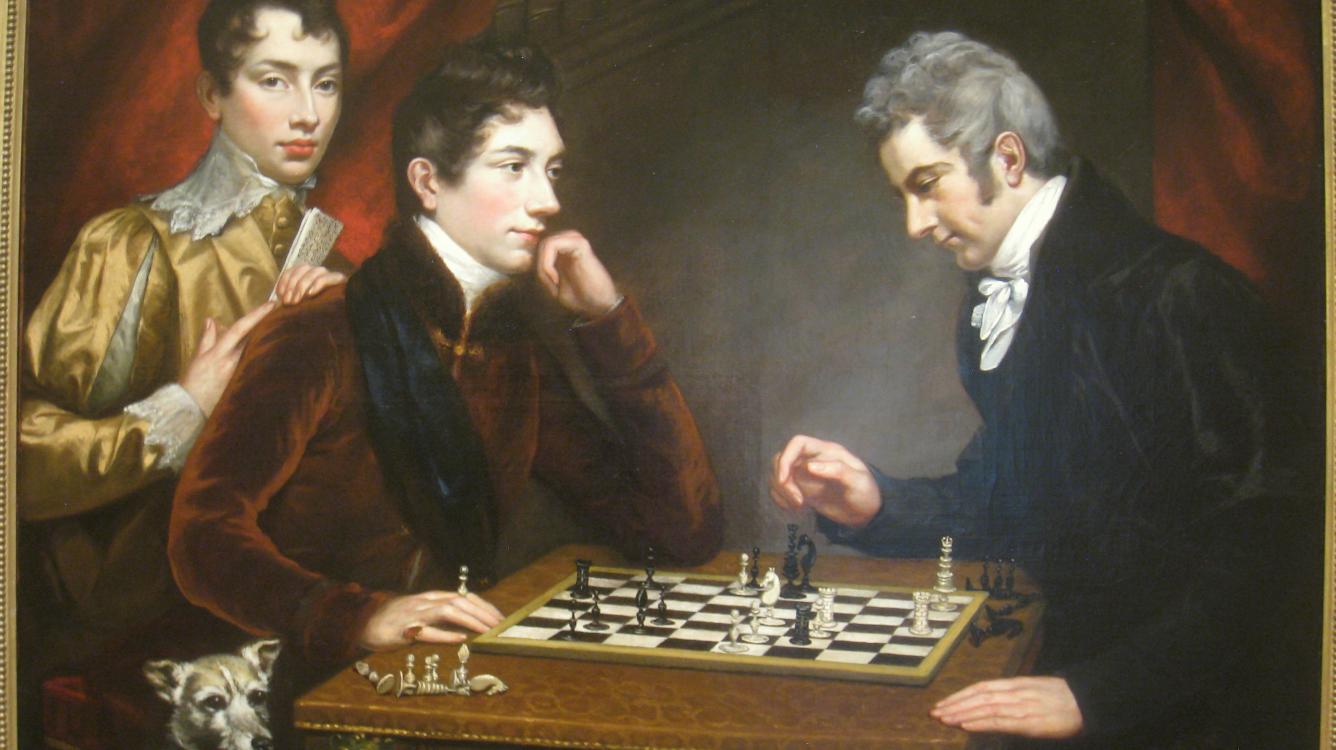
The Principles of the Opening | Chess for Beginners
Top Ten Rules to the Opening!
There are many rules and principles for the three different stages of a chess game, but the focus of this article is how to "get out of the gates" in a hurry!
Rule #1 - Develop Your Pieces!
Development means "to build and create". Development, loosely translated to "chess terms", means that in the beginning of the game you need to develop your position by getting all of your pieces out as fast as possible. Using your entire army is an absolute must when playing chess at a high level.
Rule #2 - Develop Your Pieces!
Wait a second, isn't that the same rule... Hhhhmmm, that's weird. Anyway, what I'd like to point out with rule #2 is which pieces you should be developing first: In general, your "minor" pieces should come out first. The minor pieces are your Knights and Bishops. They're the easiest to develop, and because your Rooks and Queen can't really get into the game until later (see rules 5 and 8) you shouldn't be thinking about moving "the big guys" until the "little guys" are in the game.
Rule #3 - To Develop Your Pieces, or Not to Develop Your Pieces? DEVELOP!
Yes, development really is that important! Develop, develop, develop your pieces... Without the help of all your dudes, how can you expect to win? With rule #3 I'd like to talk about where you should be developing the pieces: Though rule #7 will reiterate this idea, establish in your thinking now that the best place to develop your pieces is toward the center. Below you will see a fun example of what, in a perfect world, might be the "best" way to develop your pieces:
Rule #4 - Don't Move a Piece Twice Before Move 10!
After reviewing the first three rules and seeing an example of how one might want to complete their development in a perfect world, this next step should be easy to understand. Just look at the last example and imagine how crazy someone would need to be to move their Knights back and forth while their opponent developed. Well, trying to battle the enemy army by only using one piece at a time would be just as nuts. For example:
Rule #5 - Don't Bring Your Queen Out Early!
If either player is truly following our first four rules, and has therefore developed all of the minor pieces, the last thing you would want to do would be bring your Queen out too early. Think about it: The Queen is worth more than any piece besides the King. Some would say that the Queen is more important than your mother (just joking, for any kids reading this). If the Queen starts mixing it up with the little guys, her chances of getting lost along the way are pretty good. Here is an extreme example:
Rule #6 - Get Castled (Before Move 10)!
Generally, it should even be possible to castle before move 7, but I'm a nice guy and will give you some leeway. Getting Castled is one of the smartest things anyone ever did! Really, it is... Probably the best invention since sliced bread, or even the "Walk-In" Closet!

Anyway, castling is the most efficient way to safe-guard your King, get your rook(s) into the game, and coordinate your army all in one move. I am not sure we really need a diagram here to teach us the importance of this move. Assuming you know the rules to castling (1-- You can't castle if you have moved either the King or the Rook(s); 2-- Can't castle out of check; 3-- Can't castle into or through check). Okay, you are ready to castle, so "just do it"!
Rule #7 - Attack (Develop) Towards the Center!
Imagine a basketball game where your team never went to the rim or never crossed the three point line. Now imagine a soccer game where the players on your team straddled the edge of the field, but never ran down the middle of the field towards the goal. The likely result of such a terrible team strategy would be a crushing defeat, and the punishment for passive "non-centralized" development in chess can be just as devastating. You need to develop your pieces to their most active squares possible! Below is one of my favorite examples of what could (exaggerated of course, but still instructive) possibly happen to someone after only one passive developing move.
Rule #8 - Connect the Rooks!
This rule is in place as a kind of reminder or "insurance plan". What I mean by this is that if you simply start following the rules of development, but somehow decide to get lazy along the way, this rule will remind you that your "plan of development" isn't complete until your Rooks are connected. If you read between the lines, what does it mean if your Rooks are connected? It means you have (1) developed your minor pieces, (2) gotten castled, and (3) finally brought your Queen out to a more active (but hopefully safe) square. If you have indeed connected your Rooks, than you have likely completed the first stage of the game...
Rule #9 - Develop Plans, Not Just Pieces!
Let's assume, for the sake of learning this rule, that you have grasped all the "basic" concepts of the Opening: You plan to develop your pieces; you plan to attack toward the center and you plan to do all this while keeping watch over your opponent's threats... So if we know now that you are going to develop and get castled as soon as you can, and that you no longer need to be reminded of those important steps, then here is what I would like you to think about: When you develop your pieces, try and develop them with "purpose".
What that means is simple: Instead of just getting the pieces out, start thinking about where and why you are getting them out. Develop your Knights looking to attack pawns! Develop your Bishops looking to pin Knights!! Develop your Rooks to open files (not to files that will never become opened)!!! The possibilities are endless!
These are the principles of higher level chess, and the beginning fundamentals of learning "Opening Theory", which essentially means playing the Opening and developing moves that are considered "theoretically best" by Grandmasters and World Champions. Here is one example of a "tournament Opening" with explanations:
Rule #10 - Attack "In the Direction" of Your Pawn(s) Structure!
What if I told you that one of the secrets to planning at a master level in chess was the pawns? Here is the deal: Your pawns are the only pieces that can't go back. Which means that every time they move forward, they are deciding something permanent about the game you are playing. Weaknesses in the pawn structure or formation are positional weaknesses, which means they're permanent in the position. Learning to recognize and then attack pawn weakesses and the weak squares created by pawn moves, is the key to understanding positional chess.
So what does that quick introduction to positional chess have to do with the Opening stage of the game? The idea is that if a player looks for the open files and diagonals (or sometimes lack thereof) created by the pawns in the beginning of the game -- he/she will know where to develop the pieces. Pawns are telling your pieces exactly where to develop with every move and trade, so take the time to think about your pawns before developing your piece(s) to any random square.




